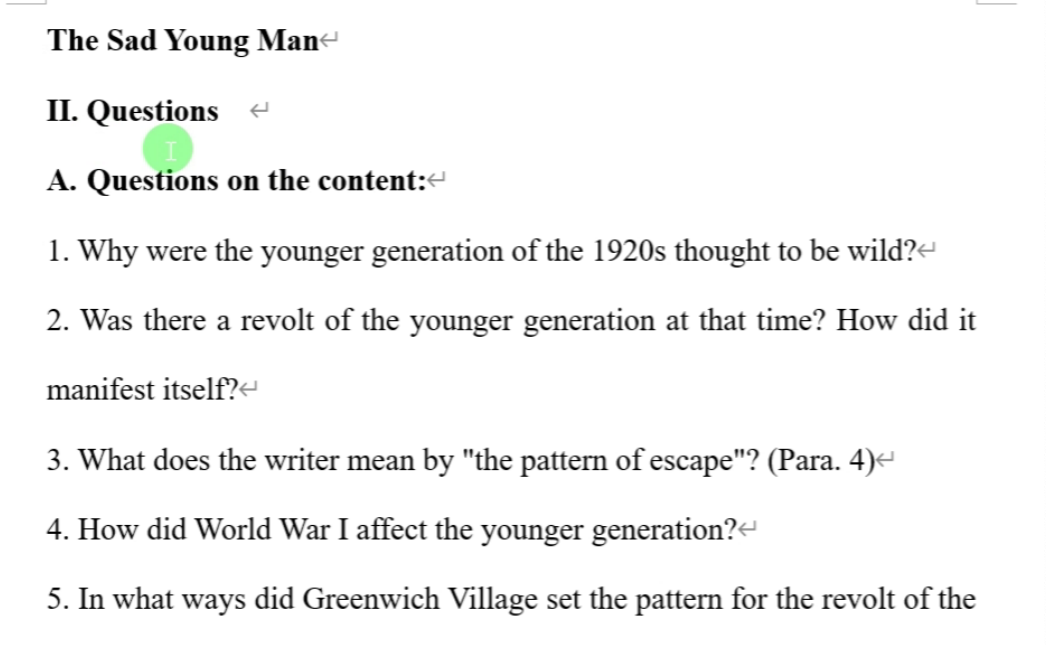the sad young men 10-31
|
Certainly, here are the answers in English,简洁地回答每个问题: 1. **Why were the younger generation of the 1920s thought to be wild?** 2. **Was there a revolt of the younger generation at that time? How did it manifest itself?** 3. **What does the writer mean by "the pattern of escape"? (Para. 4)** 4. **How did World War I affect the younger generation?** 5. **In what ways did Greenwich Village set the pattern for the revolt of the younger generation?** |
|
|
|
|
|
Certainly, here are the brief answers in English with indications of the paragraph where each answer can be found: 1. **Why were the younger generation of the 1920s thought to be wild?** 2. **Was there a revolt of the younger generation at that time? How did it manifest itself?** 3. **What does the writer mean by "the pattern of escape"? (Para. 4)** 4. **How did World War I affect the younger generation?** 5. **In what ways did Greenwich Village set the pattern for the revolt of the younger generation of the 1920s?** 6. **What new philosophy were the young intellectuals trying to preach?** 7. **Why did many young intellectuals of this period emigrate to Europe?** 8. **Why was this group of writers called the "lost generation"? Were they really lost according to the authors?** 1. **Analyze the structure of the whole essay, dividing it into parts.** 2. **What is the article's main thesis? Where is it stated?** 3. **How do the authors develop the central thought? Do they support their argument?**
文章参考;https://blog.csdn.net/hpdlzu80100/article/details/121767283
|
|
kaoshi neirong
|
|
15选5道题;
问答 ; 5 解释句子; 选词,组句子; 一段;英译汉,(出自背诵段落) 根据题目写 300字,写作题; 【综合6】
【口译】6 英汉; P174-0175, 全篇; the unitstate 多元文化;
汉英; 339-340; 联合国,1-4段;
|
















